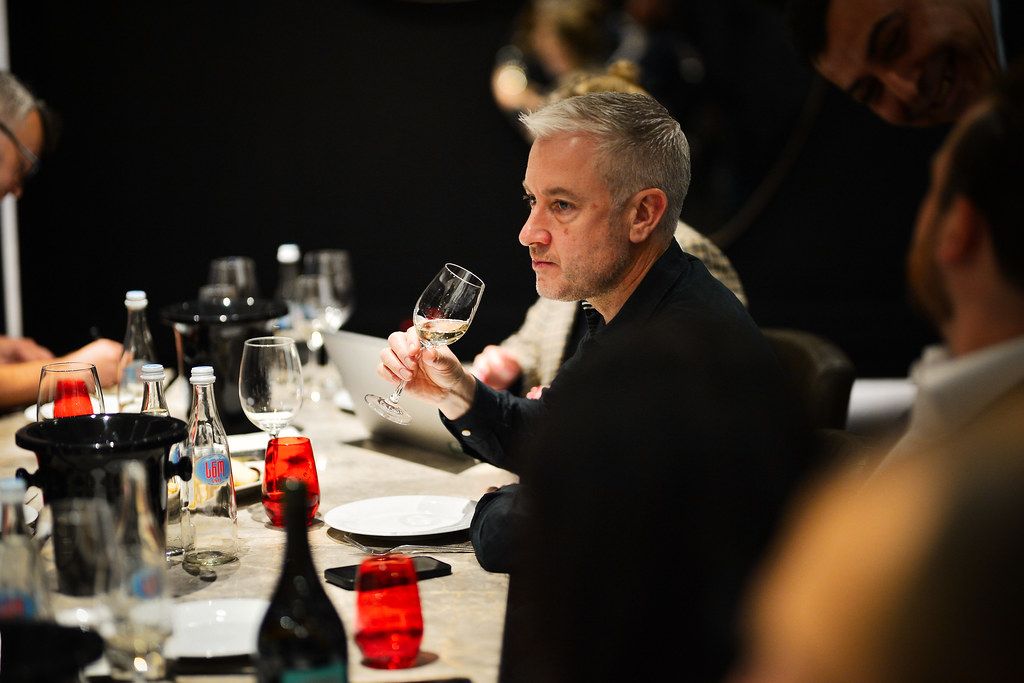“Just as old vines became a theme last year, 2023 has seen me develop a keen interest in the art of underwater ageing,” writes Kermode.
What’s another year? Well, apart from being a smash hit for Johnny Logan back in 1980, the first of an unprecedented winning double at the Eurovision song contest (a record that was matched in Liverpool this year, by Sweden’s Loreen), it means a chance to look back at some memorable bottles for The Buyer’s annual year-ending Top of the Plonks, though the latter word feels strikingly inappropriate for the wines that shall feature in my highlights of 2023.
Spring began with a visit to Menton, on France’s Mediterranean border with Italy, for lunch at Mirazur, perched on a cliff edge overlooking the Côte d’Azur with views towards Monte Carlo. Argentinian chef patron Mauro Colagreco holds the maximum three stars, and it is easy to see why. Growing most of his own produce on an escarpment behind the restaurant, his dishes offer an incredible balance and levity, but it was the pairings, with selected cuvées from Champagne Billecart Salmon, including lobster with wafer-thin radish, sea bream in a sudachi (a small sour citrus) sauce and a seasonal artichoke tart, that left us mesmerised.
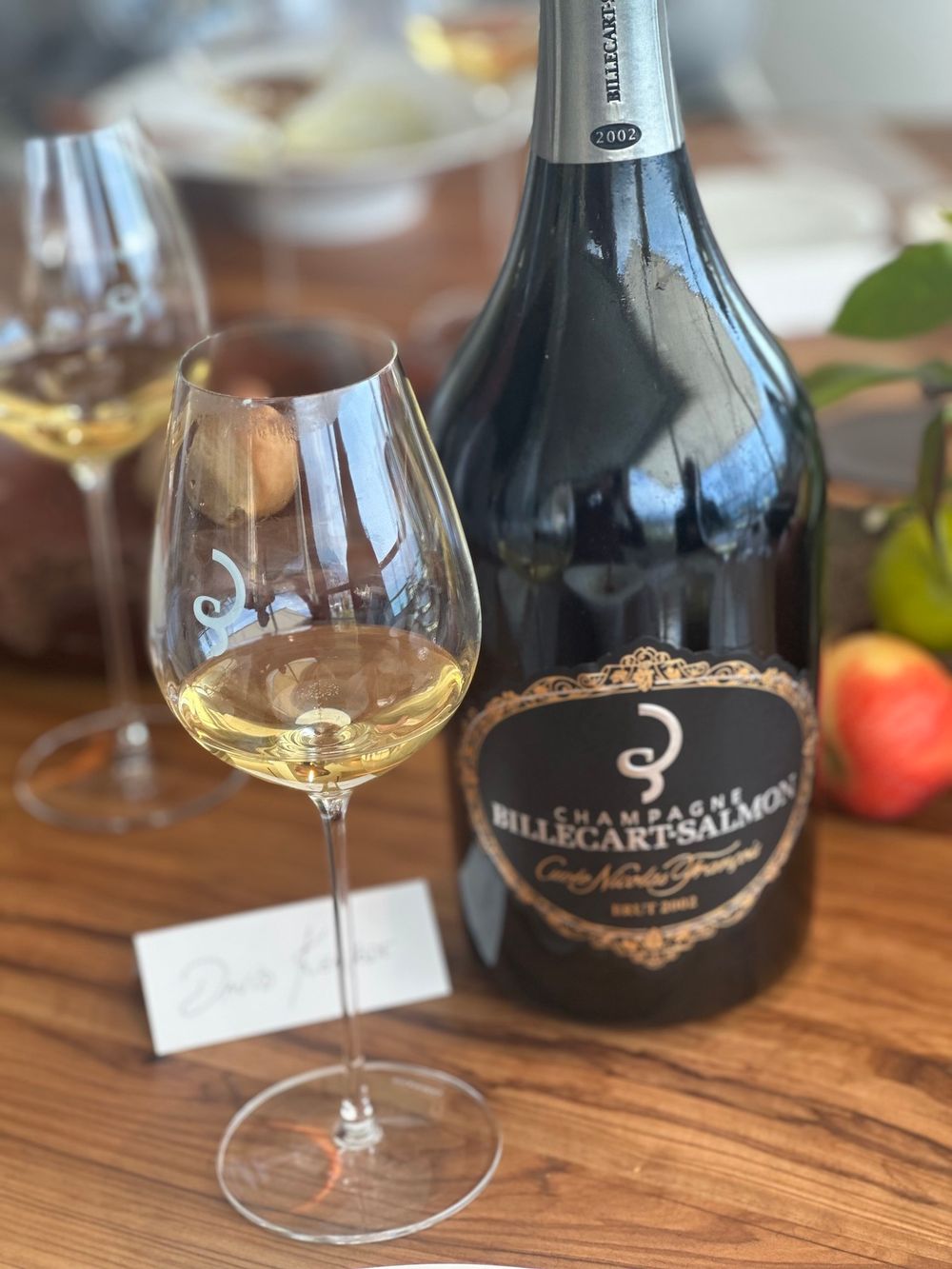
Our host was Billecart Salmon’s president, representing the seventh generation of the family, Mathieu Roland-Billecart. The house just happens to produce my favourite rosé Champagne, served with canapés, but we were there for the launch of the latest release of its top cuvée, Billecart-Salmon, Nicolas François, 2008. A blend of 83% Grands Crus and 17% Premiers Crus Vineyards, 60% Pinot Noir and 40% Chardonnay, aged on lees for 150 months, its release was apparently delayed by a couple of years until chef de cave Florent Nys was satisfied it was in a perfect place. Patience is a virtue and theirs has been rewarded with a cuvée of exceptional depth, offering tantalising layers of zesty citrus, ripe autumnal orchard fruits and the plushest patisserie, framed by an electrifying acidity that suggests it has years ahead of it. This was a stunning wine (my fellow traveller, Matthew Jukes – a veteran taster and certainly no pushover – gave it 20+ out of 20), but there was more to come, entailing a vintage vertical through the ’02, ’98 and ’86 vintages of Nicholas François – all of them in fine fettle, offering a consistent thread – right back to the launch cuvée, from 1964, which retained some impressive freshness and a silky citrus charm that Colagreco sensationally paired with pudding: ‘Naranjo en flor’, a spellbinding, cloud-like, foaming orange sorbet puff with almond brittle and teasing hints of saffron.
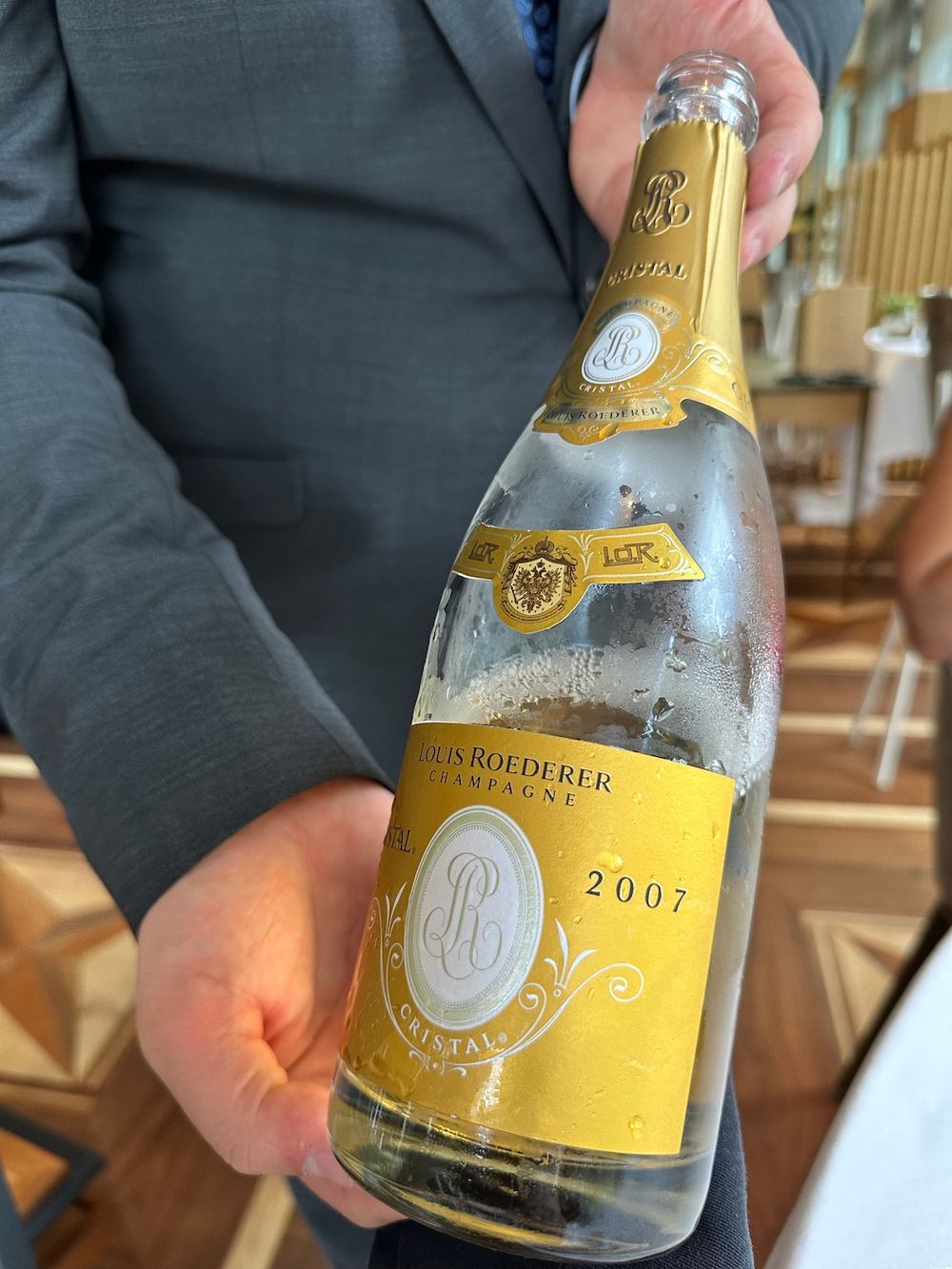
To Switzerland, where Alpine superchef Sven Wassmer has earned his own galaxy of Michelin stars. I was privileged to experience his cooking at the triple-starred Memories at the luxurious, but never ostentatious, Bad Ragaz thermal resort, an establishment that boasts six stars across its three restaurants (two of them overseen by Wassmer). His speciality is the reinvention of his native mountain cooking, using seasonal ingredients foraged from the slopes of the Alps, an approach that has also earned him a green Michelin star. Think river char, douglas fir, wild garlic, pine, mountain beef, herbs you have never heard of… all put to creative use, the spectacular results paired to perfection by wine director Amanda Wassmer-Bulgin, Sven’s wife, and head sommelier Sebastian Stichter. Though we tasted some beautiful Swiss wines that night, most of them locally sourced, I would be lying if I didn’t admit that the highlight was the 2007 Cristal, Louis Roederer that launched our tasting flight: produced from 100% Grand Cru grapes, 58% Pinot Noir, the remainder Chardonnay, the nose is powerful, yet seductive, the mousse fine and gently persistent, while the palate is concentrated, intense and multi-dimensional, with finely detailed nuances of stone fruit underpinned by a firm thread of acidity and a chalky minerality. For all its complexity, it could probably be described in one word: gastronomic. Served from a gloriously camp golden aperitif trolley, I was seriously tempted to quietly wheel it back to my room and hope that nobody noticed.
Closer to home, Michelin-starred Frog by Adam Handling also trumpets its local sourcing, despite being located at the heart of Covent Garden. The food is theatrical, inventive and delicious, so it was a proper treat to be hosted by the always ebullient team from Vergelegen, who had boldly chosen to go veggie for some imaginative pairings. It was an opportunity to meet its new winemaker Luke O’Cuinneagain, who has stepped into big shoes (those of André van Rensburg) and looks more than ready to fill them, after his stellar success at Glenelly. Vertical tastings of its flagship GVB cuvées, both white and red Bordeaux-inspired blends, were a real highlight, of course, but the wine that stole my heart on the night was a single varietal choice from a slightly lower tier in the range. Vergelegen Reserve Semillon 2020 had a nose like the finest cotton sheets drying in a delicate warm summer breeze, offering delicate hints of pithy lemon, meadow flowers, mountain honey and hay, followed on the palate by lucid citrus, crisp acidity and subtle hints of tropical depth, rounded by a lingering waxy finish.
Voted London’s best Japanese restaurant, The Aubrey at the Mandarin Oriental, Knightsbridge, offered an intimate backdrop to enjoy the launch of Bruno Paillard’s latest Blanc de Noirs, presented by daughter Alice Paillard, who now heads the house. Paired with the likes of gyozas, lobster tempura, sashimi and sushi rolls, the meal provided a delicious reminder of just how well Champagne pairs with such cuisine and also somehow served to underline the trademark idiosyncrasy of the house. Bruno Paillard Blanc de Noirs Grand Cru Multi Vintage Extra Brut was crafted as an expression of Pinot Noir from the northern crus of Champagne – in this case the first pressing of Pinot from Verzenay, Mailly, Verzy and Bouzy. Lively aromatics of pink grapefruit and cherry bakewell lead into a vibrant, pure and expressive palate with fleshy cherries, yellow plums and just a hint of salinity on the long, elegant finish. Delicious at its launch, it is a Champagne that I would love to revisit after a year or so. (The wine was given an exclusive preview in The Buyer in the summer. To read about its background click here.)

Just as old vines became a theme last year, 2023 has seen me develop a keen interest in the art of underwater ageing. Why? Because the process is bold, bizarre and baffling, in equal measure, but seems to result in better wines. I first tasted such a cuvée in 2019, when Berry Brothers & Rudd launched a Champagne that spends around a year ageing in a cage on the seabed close to the Breton island of Ouessant. It was a hit with critics and customers and its latest iteration, Champagne Leclerc-Briant Cuvée Abyss 2018, was launched at Quo Vadis in October by consultant Chef de Cave Hervé Jestin. A biodynamically-produced blend of the traditional Champagne grapes, aged on lees for three years then disgorged before being sunk to a depth of 60 metres, the result is simply sensational, with an incredible purity of fruit, palpable energy and a startling salinity that seems uncannily connected to the bottle’s (genuine) barnacles.

Underwater ageing is both expensive and risky, so the resulting wines command a premium price. On a summer trip to Santorini, I was fortunate to taste an Assyrtiko that had also been aged on the ocean floor, albeit in shallower waters due to the risk of cork failure (which is not really an issue for sparkling wines because the pressure both inside and out of the bottle is equalised at the correct depth). Gaia Thalassitis Submerged Assyrtiko 2018 rivals Cuvée Abyss for its mind-bending qualities. Though Santorini Assyrtiko is not, inherently, a very aromatic wine, the nose is amplified, with floral notes, honey and a flintiness more akin to an aged Riesling. In the mouth there’s a freshness, but also a complexity usually associated with oxidative ageing, which is of course impossible under water. If I sound slightly bewildered by it, then so does its creator, Yiannis Paraskevopoulos, a an Assyrtiko veteran. The wine is produced as a limited edition, so it is vanishingly rare, but well worth seeking out.
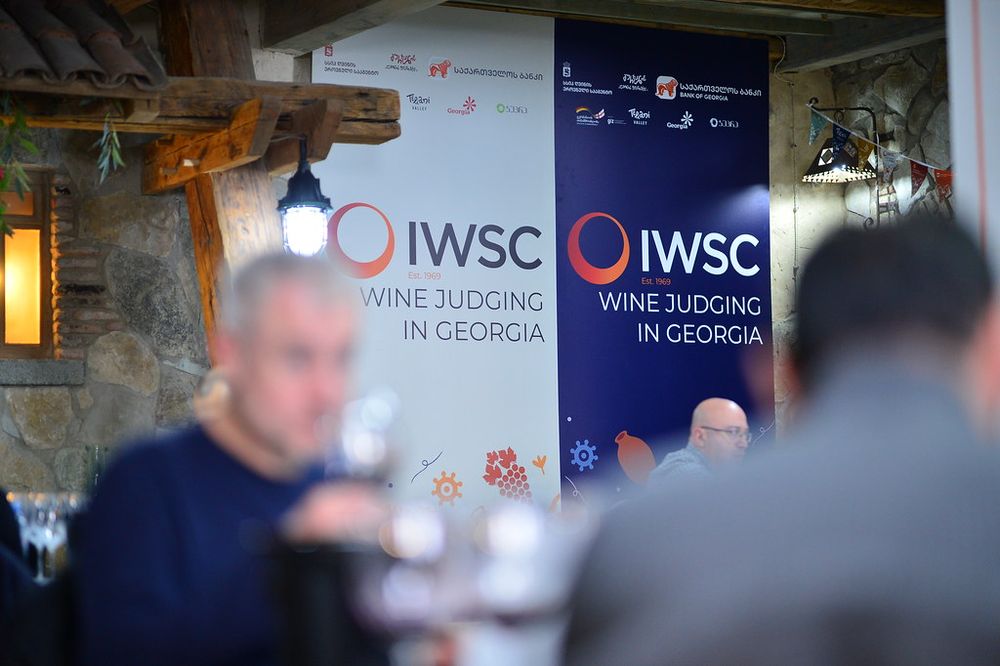
Trips to Georgia are – it would seem – like buses. Nothing for ages, then two come along, in close proximity. I was lucky enough to visit in early summer, on an excellent press trip with Sarah Abbott MW, who has done more than most to champion that country’s distinctive wines, a sizeable number of which are still produced underground in clay pots, or qvevri, as they have been for hundreds of years. Come winter, it was time to return, this time to assess around 500 of its wines for the 2024 edition of the International Wine and Spirit Competition, for whom I am an ambassador. We judged blind, of course, awarding 285 medals, including an impressive 18 golds. However, it was actually a gold medal winner from the previous year’s judging that I shall single out, because it stole the show at the Festival of Georgian Wine, at Dartington in Devon, at which I was showcasing IWSC medal winners to an enthusiastic crowd. Chelti Winery Qvevri Kisi 2020 won a gold in the ’23 competition and was also a trophy winner, representing best in show. Refined and complex, with dried apricot, mango, marmalade, roasted almonds, cheese rind, chamomile and delicate hints of saffron, there’s freshness and depth, with a fine, delicate tannic quality and a memorable, mystical transcendence.
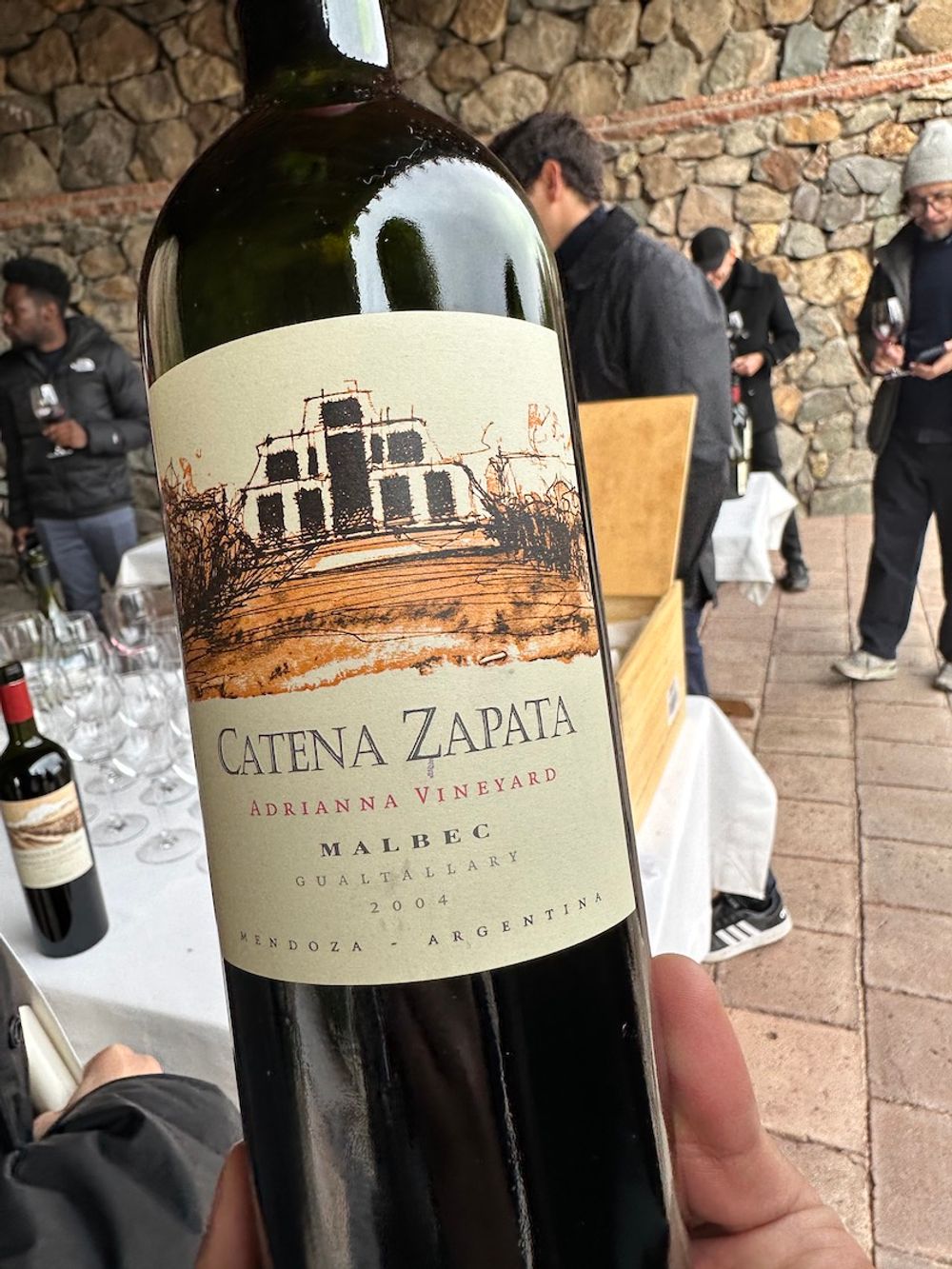
The IWSC’s ‘in situ’ judging – launched last year in the Prosecco Superior DOCG – has proven hugely successful, with return visits to Georgia and South Africa, complemented by new locations: Austria, Turkey and Argentina this past year. It was in the latter country – where 444 medals were awarded to Argentinian wines, including 11 golds – that we were treated to a series of memorable (post judging) winery visits, including Catena Zapata’s Adrianna Vineyard, five thousand feet into the foothills of the Andes. It is thanks to the pioneering work of Nicolás Catena Zapata, and a select few others, that altitude Malbec has established itself on the fine wine market, with listings on the Place de Bordeaux that might once have been unthinkable for a wine from Argentina. Catena Zapata, Adrianna Vineyard, Gualtallary, Malbec, 2004, tasted by the visiting judges as part of a vintage vertical, was my favourite: concentrated, rich, packed with ripe foraged blackberry and plum, the tannins are silky and sleek and there’s the most wonderful balance of ripe intensity and mountain freshness to this enchanting wine, with a finish that lingers on the palate just as those stunning views of the snow-capped Andes remain etched on my mind.
